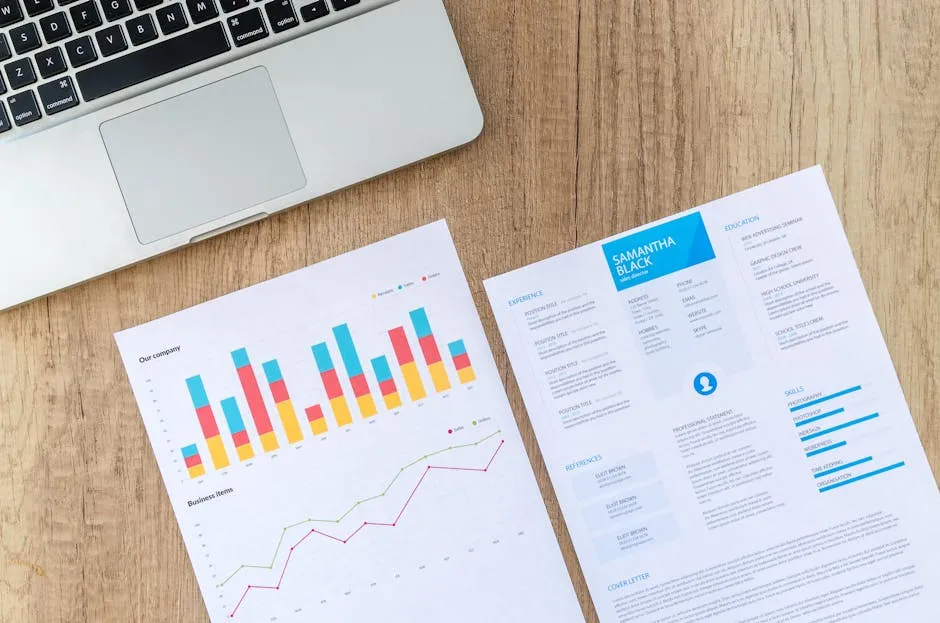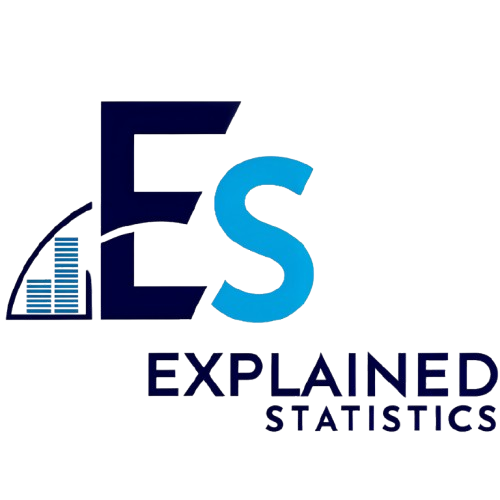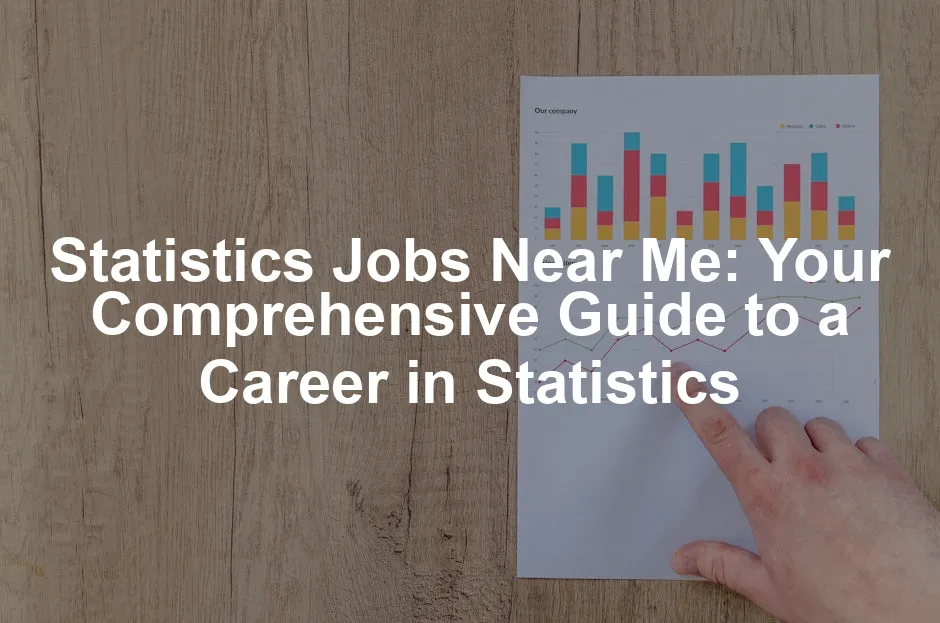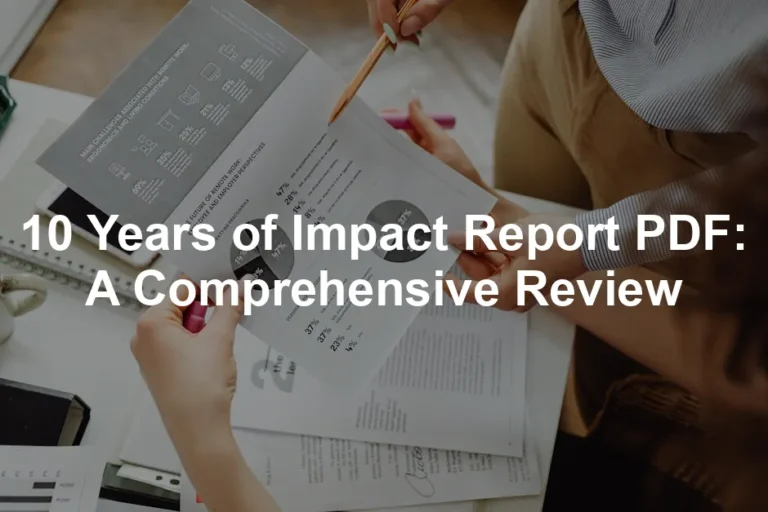Introduction
Statistics and data analysis are hotter than a summer barbecue. With every click, swipe, and scroll, data flows like a river. Businesses are wading into this data pool, seeking professionals who can extract valuable insights. This demand for statistics jobs is booming across multiple industries, from healthcare to finance.
Why the rush? Well, statistics enable organizations to make informed decisions. Whether predicting market trends, assessing risks, or evaluating patient outcomes, statisticians are the unsung heroes behind the scenes. They take raw numbers and transform them into actionable strategies.
This article serves as your trusty map. It will guide you through the landscape of statistics jobs near you. With a little luck and a sprinkle of effort, you’ll be stepping into your dream job before you know it. We’ll hone in on the phrase “statistics jobs near me” to help local job seekers connect with opportunities right in their backyard.
So, buckle up! Let’s embark on this exciting journey to uncover the world of statistics jobs. You might just find the career path you’ve been searching for, right around the corner.

Understanding Statistics Jobs
What are Statistics Jobs?
At their core, statistics jobs revolve around data-driven decision-making. These roles are essential for organizations that rely on numbers to guide their strategies. Statisticians, data analysts, and biostatisticians are among the key players in this vibrant field.
Statisticians gather and interpret data, helping companies understand complex information. They develop surveys, experiments, and models to collect data that can inform business decisions. Data analysts take it a step further, focusing on analyzing data sets to identify trends and patterns. Think of them as the detectives of data, solving mysteries hidden in numbers.
Biostatisticians work specifically in healthcare and pharmaceuticals, analyzing data from clinical trials. Their role is critical in determining the effectiveness of new treatments and medications. These professionals ensure that public health decisions are based on solid evidence.
In today’s data-centric world, the importance of statistics jobs cannot be overstated. They not only influence business outcomes but also contribute significantly to advancements in various sectors. So, if numbers get you excited, a career in statistics might just be your calling!

Skills Required for Statistics Jobs
To thrive in statistics jobs, you need a blend of technical prowess and soft skills. First up, let’s tackle the technical side. Statistical analysis is the bread and butter of this field. You should be comfortable assessing data sets, performing hypothesis testing, and interpreting results. Data manipulation is another key skill. Knowing how to clean and prepare data is crucial before any analysis can take place.
Familiarity with statistical software is a must. R and Python are the reigning champions in this arena. Both languages have robust libraries that make data analysis a breeze. If you fancy data visualization, tools like Tableau and Power BI can help you create stunning graphics that tell a story. To get started, consider picking up a copy of the Tableau for Dummies Book to get a head start!
Now, let’s not forget the soft skills. Problem-solving is essential. Statistics often requires you to think critically and creatively to derive insights from data. Communication skills are equally important. You’ll need to present findings clearly to non-technical stakeholders. Being able to explain complex statistical concepts in simple terms is a game-changer.
Additionally, teamwork plays a significant role. Many statistics jobs involve collaborating with cross-functional teams. So, being a team player can enhance your performance and make your work life more enjoyable.

Types of Statistics Jobs
Entry-Level Positions
– Data Analyst: Data Analysts are the superheroes of data interpretation. They dive into databases, extract trends, and provide actionable insights. Responsibilities include creating reports, visualizing data, and collaborating with teams to improve data-driven strategies. Typically, a bachelor’s degree in statistics, mathematics, or a related field is required. Proficiency in SQL and Excel is also essential. For those looking to enhance their skills, check out the Excel Data Analysis Book.
– Statistical Assistant: Statistical Assistants support statisticians in collecting and analyzing data. Their tasks often include preparing data sets, conducting preliminary analyses, and assisting in the preparation of reports. A foundational knowledge of statistics and experience with tools like SPSS or SAS can give you a leg up in this role.

Mid-Level Positions
– Statistician: Statisticians take on more complex projects. They design surveys, experiments, and models to collect and interpret data. To excel as a statistician, you’ll need a strong background in mathematics and statistics, along with a master’s degree in a related field. Experience in conducting statistical analyses and proficiency in statistical software are also crucial. For a solid foundation, consider the Statistical Analysis with R Book.
– Data Scientist: Data Scientists are the rock stars of the data world. They blend statistical analysis with programming skills to extract insights from massive data sets. This role often requires expertise in machine learning, data mining, and data visualization techniques. A solid understanding of R, Python, and big data technologies is key. Data Scientists not only analyze data but also create algorithms and predictive models, making them invaluable to any organization. To get started in this field, grab a copy of Hands-On Machine Learning with Scikit-Learn, Keras, and TensorFlow Book.

Senior Positions
Senior Statistician
In the world of statistics, senior statisticians hold the keys to the kingdom. They are not just number crunchers; they’re the wise sages guiding teams through complex data landscapes. Expectations for these roles are sky-high. You’re expected to lead projects, mentor junior staff, and provide strategic insights.
A senior statistician designs comprehensive studies and interprets data with finesse. They often liaise with other departments, translating statistical findings into actionable business strategies. Think of them as the bridge between data and decision-making.
To thrive in this role, you’ll need a robust academic background. A master’s or even a Ph.D. often sets the stage. Experience matters too. Hiring managers seek those who have navigated various statistical challenges and can demonstrate leadership in their past roles.
The rewards? Competitive salaries, career growth opportunities, and the satisfaction of shaping data-driven decisions that impact organizations significantly. If you’re ready to take on the challenge, the role of a senior statistician might be your next big leap.

Biostatistician
Now, let’s shift gears to biostatisticians. These professionals are the unsung heroes in the healthcare and pharmaceutical realms. Their work is pivotal in analyzing data from clinical trials, ensuring that new treatments and medications are not just effective but also safe.
Biostatisticians apply statistical methodologies to real-world health problems. They collaborate with researchers and healthcare providers to design experiments and assess outcomes. This role is all about precision, as even the slightest miscalculation can have serious consequences.
Qualifications typically include a strong foundation in mathematics and statistics, coupled with a focus on biological sciences. Many employers prefer candidates with a master’s degree or higher. Experience in statistical software, such as SAS or R, is essential. If you want to dive deeper into the biostatistics field, the Biostatistics for Dummies Book is a great resource!
The impact of a biostatistician’s work resonates throughout the healthcare industry. They help pave the way for groundbreaking treatments and contribute significantly to public health decisions. If you’re passionate about health and data, this career path offers both fulfillment and a chance to make a difference.

Finding Statistics Jobs Near You
Online Job Portals
Searching for statistics jobs near you? Online job portals are your best bet. Websites like LinkedIn, Indeed, and Glassdoor are treasure troves of local job openings. They allow you to filter results based on location, job type, and experience level, making your search efficient and targeted.
When using these platforms, start by entering “statistics jobs” into the search bar, followed by your location. This simple trick can yield a plethora of opportunities right in your area. Don’t forget to set alerts to stay updated on new postings!
Additionally, consider utilizing niche job boards focusing on statistics and data science. These sites often feature specialized roles that mainstream job boards might overlook.
Tip: Always fine-tune your search by applying filters. Specify your preferred job type—full-time, part-time, or remote. Adjust the experience level filter to match your qualifications, ensuring that you only see jobs that fit your profile.

Networking
Building Professional Connections
Networking can be your secret weapon in landing a statistics job. It’s not just about who you know; it’s about who knows you! Building professional connections in the statistics field can open doors to hidden opportunities.
Utilizing platforms like LinkedIn is a smart move. Start by connecting with industry professionals, joining relevant groups, and participating in discussions. Engaging with the statistics community can lead to invaluable insights and job leads.
Consider attending local meetups or industry conferences to expand your network further. These events are great for meeting like-minded individuals, sharing experiences, and discovering unadvertised job openings. Don’t shy away from reaching out to alumni from your university as well; they can provide guidance and potentially refer you to positions within their organizations.

Joining Local Statistics Groups
Joining local statistics groups is another fantastic way to stay in the loop. These groups often share job opportunities, host workshops, and provide a platform for knowledge exchange. Whether online or in-person, these connections can greatly enhance your job search.
By participating in these communities, you can also gain insights into industry trends and best practices. Plus, you’ll meet fellow data enthusiasts who can share their experiences and advice.
In summary, don’t underestimate the power of networking. By actively engaging with the statistics community, you’ll increase your chances of finding a job tailored to your skills and passion.

University Career Centers
Hey recent grads! Your university’s career center is a hidden gem for job seekers. These centers offer a wealth of resources tailored to help students and alumni navigate the job market. They often have job boards featuring positions specifically for statistics majors.
Additionally, career services can assist you in polishing your resume and practicing interview techniques. They may even host career fairs, connecting you directly with employers looking for fresh talent.
Internships are another big perk. Many universities partner with local companies to offer internships that can lead to full-time positions. These experiences not only enhance your resume but also help you build a professional network. So, take full advantage of your university’s career services. They might just help you land that dream statistics job!

Job Application Tips
Crafting a Compelling Resume
Your resume is your first impression. Make it count! Start by highlighting relevant coursework. Include classes that showcase your statistical knowledge, like Advanced Data Analysis or Statistical Programming.
Projects are golden nuggets for your resume. If you’ve completed a capstone project or research work, list it! Be specific about your role and the statistical methods used. Did you analyze survey data? Mention how your insights helped shape conclusions.
Also, don’t forget to include technical skills. List software and programming languages you’re proficient in—R, Python, SQL. Employers love seeing that you can hit the ground running. Keep it concise and impactful, focusing on achievements rather than duties.

Writing a Persuasive Cover Letter
A cover letter is your chance to connect. Use it to showcase your passion for statistics and data analysis. Start with a strong opening that grabs attention. Mention why you’re excited about the role and the company.
Tailor your cover letter to each job. Highlight specific experiences that align with the job description. If the position emphasizes data visualization, discuss a project where you created impactful visuals using tools like Tableau.
Be sure to convey your enthusiasm for the field. Employers want to know you’re not just looking for any job. Show them you’re eager to contribute and grow within their organization. End with a compelling call to action, inviting them to reach out for an interview.
With a stellar resume and a persuasive cover letter, you’ll be well on your way to landing that statistics job!

Salary Expectations and Job Market Trends
Salary Overview
When considering a career in statistics, understanding salary expectations is crucial. According to the latest data, average salaries for statistics professionals vary significantly based on the role. For instance, entry-level data analysts earn around $60,000 annually, while seasoned statisticians can command upwards of $90,000. Biostatisticians, particularly in healthcare, often see salaries exceeding $100,000 due to the specialized nature of their work.
Location also plays a vital role in determining salary. Urban areas typically offer higher wages compared to rural regions. For example, statisticians in New York or San Francisco may earn 20-30% more than their counterparts in smaller cities. This salary discrepancy reflects the cost of living and the concentration of industries that rely heavily on data analysis in metropolitan areas. Therefore, when searching for “statistics jobs near me,” keep in mind that your location can greatly influence your earning potential.

Job Market Trends
The job market for statistics professionals is experiencing a surge. Industries such as healthcare, finance, and technology are driving this demand. In healthcare, for instance, the need for biostatisticians has grown due to the increasing reliance on data to evaluate treatments and patient outcomes. Financial institutions are also hiring more data analysts to assess risks and optimize investments.
Technological advancements are reshaping job roles within statistics. With the rise of big data and machine learning, there’s a growing emphasis on skills related to data science. Roles like data scientist and machine learning engineer are becoming more common. Statisticians now often collaborate with IT departments to integrate sophisticated analytics tools and software into their workflows.
Moreover, remote work has opened doors for statistics jobs, allowing professionals to work for companies located in different cities or even countries. This shift means that job seekers can explore greater opportunities without relocating. As the field evolves, embracing new technologies and methodologies will be crucial in staying competitive.
In conclusion, pursuing a career in statistics not only offers competitive salaries but also places you at the forefront of industry growth. With data becoming increasingly integral to decision-making across sectors, the future looks bright for aspiring statisticians.

FAQs
What qualifications do I need for a statistics job?
To land a statistics job, a solid educational background is essential. Most roles require at least a bachelor’s degree in statistics, mathematics, or a related field. Many employers prefer candidates with advanced degrees, such as a master’s or Ph.D., especially for positions like statistician or biostatistician. Certifications in statistical software or data analysis tools can also enhance your marketability. Programs in R, Python, or SAS are particularly valued. Gaining practical experience through internships or projects will further bolster your qualifications, making you a strong contender in the competitive job market.
How can I improve my chances of landing a statistics job?
Improving your chances starts with building a strong foundation in statistics and data analysis. Engage in internships, volunteer projects, or relevant coursework. Networking is also crucial. Attend industry meetups, connect with professionals on LinkedIn, and join local statistics groups to tap into hidden job opportunities.
Are statistics jobs in high demand?
Yes! The demand for statistics jobs is on the rise. Industries such as healthcare, finance, and technology are actively seeking data professionals to drive decisions based on data analysis. As businesses increasingly rely on data to inform their strategies, the need for skilled statisticians will only continue to grow.
What tools and software should I be familiar with?
Familiarity with statistical software is essential for success in statistics jobs. Key tools include R and Python, which are widely used for data analysis and visualization. Additionally, SQL is crucial for managing and querying databases. Knowledge of data visualization tools like Tableau or Power BI is also beneficial, enabling you to present your findings effectively to stakeholders.
Please let us know what you think about our content by leaving a comment down below!
Thank you for reading till here 🙂
If you’re interested in pursuing a career in this field, check out this comprehensive guide on sports statistics jobs for more insights.
All images from Pexels




